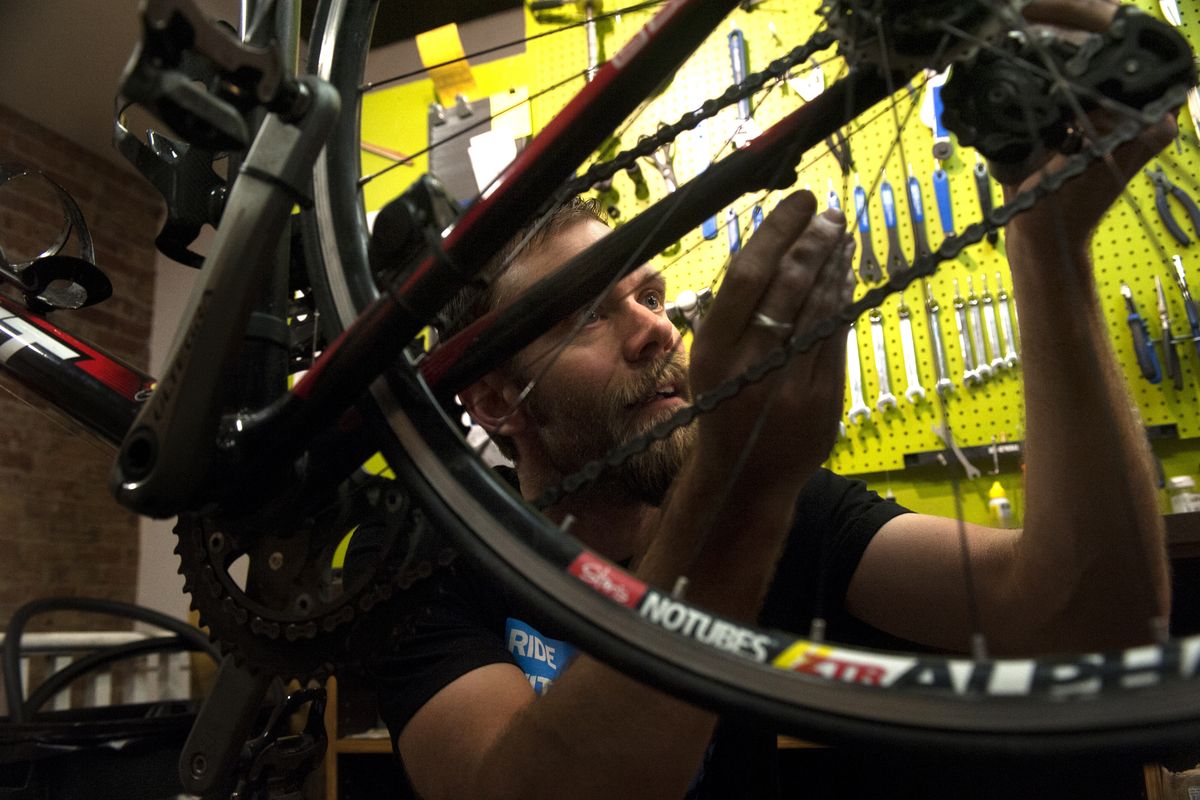Tips for getting your bike in tune

BOISE – Once upon a time, bikes were pretty simple and durable machines, but as they’ve improved mechanically, they’ve also become more complex.
If you want your bike to ride smoothly and efficiently, it’s time for a quick tune-up.
You should know the basics of your bike and how to maintain it. Here are some guidelines, and how to know when it’s time to visit your local bike shop.
Tires
Check the recommended air pressure on the sidewalls and inflate the tires to within that range.
Higher air pressure means less rolling resistance and reduces the chance of pinch flats. It also means less traction and a harsher ride.
Lower tire pressure means a softer ride and more traction, but it requires more pedaling effort because of increased rolling resistance.
Varying the air pressure is one of the simplest ways to fine-tune your bike.
You can also add Slime or similar products to avoid small punctures.
If you have tubeless tires, add sealant, which dries out inside the tire after a few months.
See a mechanic if: Tire treads are excessively worn or the sidewalls are cracked, split or frayed, in which case you probably need new tires.
Chain
A clean, lubricated chain is critical for efficient pedaling and smooth shifting.
The best way to clean it is to remove the chain from the bike by finding the master link or by using a chain breaker, which is a small, inexpensive tool.
Soak the chain in a solvent or hot water with a grease-cutting detergent and scrub it clean. Rinse it, allow it to dry and lubricate it.
When the chain is off, clean the rear cassette (the cluster of sprockets) and the front chain rings.
If you don’t want to remove the chain, there are kits that help you clean it while it’s on your bike.
See a mechanic if: The chain is excessively rusty, links are stiff or the chain jumps on the cassette or chain rings. Bike shops have a gauge that determines whether the chain has been overstretched.
Brakes
For discs brakes, squeeze the brake levers. The resistance should steadily increase. If they feel spongy or the lever goes all the way to the handlebar, you could have a leak in the brake line, your pads may be worn, or your calipers could be out of adjustment.
Ensure the rotors are not excessively rubbing against the brake pads. Spin the tires and listen for rubbing.
For rim brakes, check the cable to see if it has slipped or stretched. Make sure the pads are properly contacting the rim when the brakes are engaged. Pads should not hang under the rim or touch the tires.
See a mechanic if: Your brake pads are worn and need to be replaced, or if your brakes are rubbing, squealing, squeaking or not providing adequate stopping power.
Shifters and derailleurs
Ride the bike and shift through all its gears. The bike should shift quickly and smoothly. It should not rattle, rub against the derailleur, skip gears or change gears by itself.
You can make minor derailleur adjustments with the barrel adjusters on your shifters, but do so gradually – like a quarter- or half-turn at a time.
See a mechanic if: You have cleaned and lubed the entire drive train and the bike still doesn’t shift properly.
Suspension
Check the air pressure in your shock and fork. See your owner’s manual for the proper pressure or go to the manufacturer’s website to find it.
Look for signs of any oil seeping or leaking out of the shock, fork or seat post. Compress your shock or fork and release it. It should be smooth and progressive, not springy or bouncy.
If your shock needs to be frequently pumped with more air, the seals may be worn and leaky.
See a mechanic if: There are leaks, rough spots in the travel or clunking. Forks and shocks also need periodic inspection and maintenance by a mechanic.
Cranks/bottom bracket/pedals
These tend to be pretty low maintenance, but they can be the source of annoying creaks and squeaks.
See a mechanic if: Cranks and bottom brackets should be removed periodically and inspected, which takes special tools.